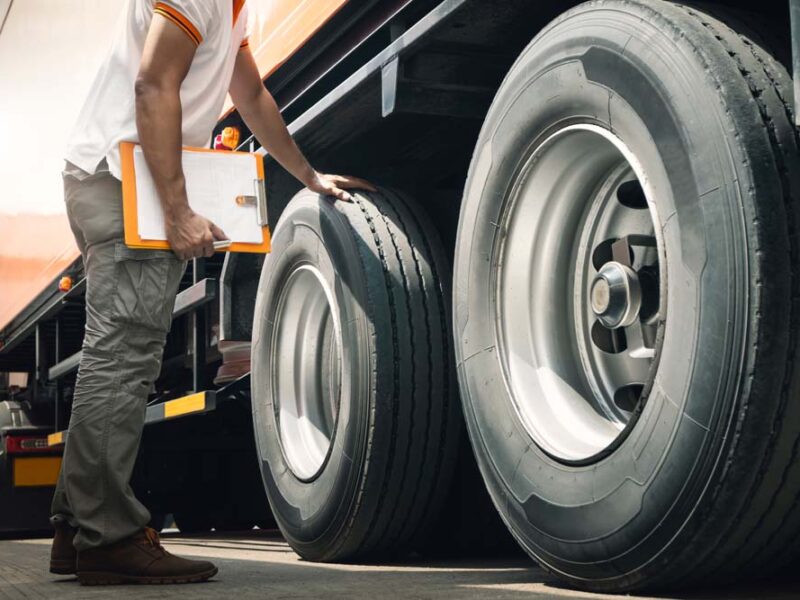Changes to Code of Practice for Enforcement of Weighing of Vehicles
All commercial vehicles being used on the highways and byways of the UK have a maximum weight that they are allowed to carry which is usually determined by the type of vehicle and how many axles it has.
The weight limit is there to ensure the safety of road users by ensuring that the loads being carried do not exceed the braking capability or load bearing capacity of the vehicle, but also to minimise the damage caused to the nation’s roads and bridges, as well as ensuring a fair and level playing field for all transport operators.
Who can Ask for a Vehicle to be Weighed?
Any vehicle can be weighed by either a police officer, an authorised office or a highway authority (normally an inspector of weights and measures) as well as an authorised enforcement examiner on behalf of the Department for Transport, normally a DVSA officer. Any of these officers can request that a vehicle is weighed at any time. A vehicle on the UK roads may be stopped or directed for the purposes of weighing by a uniformed police officer or an accredited DVSA stopping officer. An accredited DVSA enforcement Officer can, on production of their authority, direct a stationary vehicle to a weighing site at any time without the need for a police officer to be involved.
If a driver is ‘requested’ to do so, they must comply with “any lawful” instruction given by the authorised officer. Failure to do so will constitute an offence and may lead to prosecution of the offender. There are some exceptions to this rule, such as vehicles carrying passengers or livestock, dangerous loads and loads sealed by customs. A driver should inform the authorised officer at the time of the request if their load falls into such a category, where upon special consideration will be considered.
What will Follow an Overweight Verdict?
If the vehicle is found to be over the permitted weight limit the driver and any other person who “uses, causes or permits” the use of the vehicle in that condition, which may include the consignor may be issued with a fixed penalty notice or reported for prosecution. A prohibition notice may be issued which would prevent the vehicle from rejoining the UK road network until at least some of the load is removed.
In cases where vehicles operated under operator’s licences are found to be overweight notification to the appropriate Office of the Traffic Commissioner can follow – and is required where the offer of a fixed penalty is issued, or following a conviction - when further investigations can be undertaken.
What are the Changes to the Code of Practice?
The updated guidance for DVSA examiners and Police officers focuses on weight checks using the following methods:
- Portable weighpads
- Single and multi-plate weighbridges
- Other non-dynamic weighing equipment
- Dynamic axle weighers (including in static mode)
The main areas that have had changes made to them in the code are:
- Updates to the relevant legislation
- Changes to allow authorised enforcement examiners the ability to measure the suitability of a temporary site for weighing vehicles using portable weighpads
- The introduction of self-verification as an option for weighbridge sites
What affect these changes will have on the number of vehicles pulled in for weight testing remains to be seen, but the aim does seem to be to make it easier for both the Police and DVSA to set up weigh stations to enable them to tackle overweight vehicles.
If you would like to read the new updated code, please click here.
If you have had an issue with an overweight vehicle, or if you would like to ensure that your policies and procedures for avoid this type of issue are adequate then call us on 01279 818280 or click here to send us an email. We are here to help.

Latest Coach & Bus Industry News and Insight

DVLA Confirms New Rules for Professional Drivers Living with Diabetes
From Friday 7th November 2025 the rules were changed to allow diabetic drivers of PSV’s and HGV’s to monitor their glucose levels using Continuous Glucose Monitoring Systems….

The Senior Traffic Commissioner’s Statutory Guidance
The value of The Statutory Guidance Documents and the importance to operators, nominated transport managers and other professionals involved in the operation and driving of large commercial vehicles cannot be overstated…

Walkaround Checks – Where Road Safety Starts
Every day, often before the sun is above the horizon, hundreds of thousands of commercial vehicles are started up by their drivers and then they head out on to the UK’s road network to transport goods or passengers from one point to another, often with demanding time constraints thrown into the mix…

Traffic Commissioner’s Annual Report 2024/25: “Don’t Look Back in Anger”
Time has flown by and once again we find that the schools are back after the long summer break and the Office of the Traffic Commissioner has issued its annual report to the Secretary of State, providing a review of the year…

An Apple a Day to Keep the DVLA Away – A review of the DVLA’s Rules on Health Checks for Professional Drivers
There has been some discussion in the industry trade press recently that has highlighted proposed changes to how the disease of diabetes is monitored in professional drivers by the DVLA. One article in RouteOne Magazine stated that…

Revisiting the DVSA’s Guide to Maintaining Roadworthiness
In April 2025 the Driver & Vehicle Standards Agency (DVSA) issued the latest edition of its Guide to Maintaining Roadworthiness.

The Wheels on the Bus go Round & Round….but how do they Stop?
At the tail end of 2024 a Public Inquiry was held in front of Traffic Commissioner Kevin Rooney where the subject of brake maintenance practices was called into question…

Maintenance Provision Rating Scheme for Commercial Vehicle Workshops is Launched
One of the key tenants of running a commercial vehicle operation, whether ‘HGV’ or ‘PSV’ is that the maintenance of the vehicles is paramount. For some operators this will mean having their own maintenance facilities and teams to look after their fleet of vehicles in house, but the majority of operators in the UK are reliant on 3rd Party maintenance providers…

New Rules for Vehicle Operators and Drivers Carrying Out International Journeys
The Department for Transport and the Driver and Vehicle Standards Agency recently issued a bulletin regarding the new rules that vehicle operators and their drivers will have to comply with if travelling on international journeys…

Road Haulage Association Members and DVSA Leadership Work Shadow Each Other!
To help highlight the Road Haulage Association’s “National Lorry Week” which this year was between 4th and 8th November 2024, the Road Haulage Association and the DVSA’s Leadership team decided to spend some time work shadowing each other….

2024 Update to Guide to Maintaining Roadworthiness (GTMR)
The Guide to Maintaining Roadworthiness is the Driver & Vehicle Standard Agency’s (DVSA) standard produced in collaboration with key industry stake holders which explains the responsibilities and systems involved in maintaining vehicles in a roadworthy….

New Driver CPC Reforms to be in Force from 3rd December 2024
Following a very lengthy consultation period on this matter launched in early 2023, Parliament finally debated the “Vehicle Drivers (Certificates of Professional Competence) (Amendment) Regulations 2024” on Tuesday 29th October 2024…
